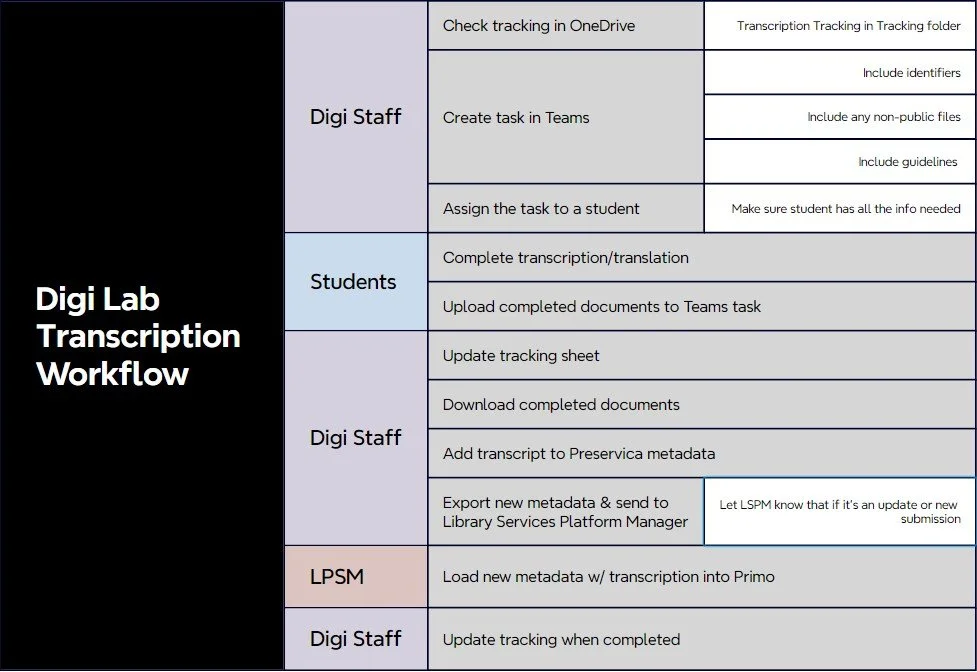Transcription Training
This page outlines a transcription training program designed for archival student workers assisting USM's Digital Lab. The program emphasizes the importance of accurate and efficient transcription, providing hands-on training and essential tools to allow student aid in this vital role.
Importance of Accurate Transcription
Accurate transcription plays a vital role in preserving historical records and making them accessible to researchers, historians, and the public. Errors in transcription can distort the meaning of original documents and compromise their value. The training program will instill the importance of meticulous attention to detail and the need for consistent accuracy in every transcript. Transcription also allows equitable access to the information found in documents & artifacts.
Ensuring the integrity of historical documents.
Facilitating accurate research and interpretation.
Preserving cultural heritage and knowledge.
Promoting accessibility to valuable archival materials.
Overview of Archival Materials
Archival materials encompass a wide range of formats, each with its own unique characteristics and challenges for transcription. USM’s Special Collections include many diverse types of materials, including (but not limited to):
Letters
Diaries
Photographs
Audio recordings
Video recordings
Maps
Government documents
And more!
Transcription Workflow
1. Assignment Prep
Digi Lab staff will set up a task in Microsoft Teams with all the necessary information for a set of documents. This task will then be assigned to a student.
2. Student Transcription
The student will then review the documents and transcribe their text into a Word document. The completed Word doc(s) will then be uploaded to the Teams task by the student and the student will mark the task as "Complete", notifying Digi staff.
3. Review & Ingest
Digi staff will review the Word doc and send it back to the student if revisions are needed. Once the transcription is approved, Digi staff will update the transcription tracking sheet and add the transcription to the item's metadata in Excel or Preservica. If the item is already public in Preservica, the metadata will need to be re-harvested to Primo. Once everything is complete, Digi staff will update the tracking sheet.
Transcription Software & Tools
The Digi Lab uses several tools for transcription & delivery. If you do not have access to these tools, please email digitalcollections@usm.edu.
Adobe Acrobat (paid license)
Run OCR and Word doc conversion
Microsoft Word
Text manipulation
Microsoft Teams
Task assignment and document delivery
Resources
The following resources will be essential to the student's role in transcribing. Our staff are also available for any questions/concerns you might have (email digitalcollections@usm.edu).
Run OCR on a PDF Document
A guide on how to run an OCR report on a PDF document within Adobe Acrobat. Also includes instructions on how to convert a PDF to a Microsoft Word document. (Tip: click “View on Tango.us” in upper right corner)
Transcription Guidelines
These guidelines from the CWRGM project have been edited to reflect the workflow we follow internally at USM’s Digital Lab. Includes a quick guide, an example, and detailed protocols. (6.4 MB)
Transcription Tutorial
Skip to 2:40 for real-time transcription training. USM’s Digital Lab does not use “From the Page” software at this time, please disregard instructions specific to this software.
Library of Congress Transcription: Basic Rules
Tips and tricks on how to transcribe archival documents.

